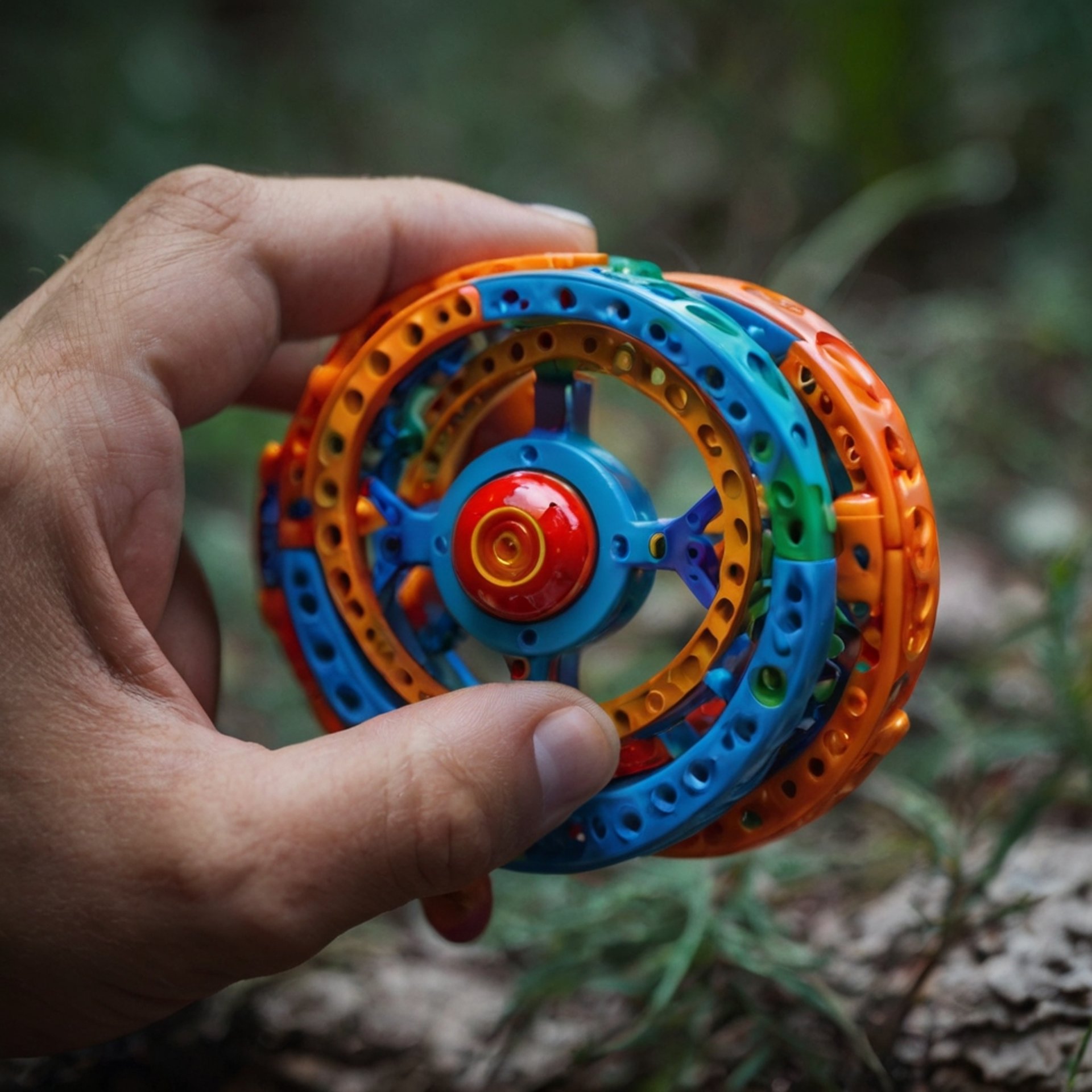
The Science Behind Fidget Toys: Why They Help Reduce Anxiety
Unlock the science behind fidget toys and discover how these simple tools can help reduce anxiety and improve focus. Explore the surprising benefits of fidget toys and how they can transform stress management in everyday life. "The Science Behind Fidget Toys: Why They Help Reduce Anxiety" will reveal everything you need to know!
TOYS FOR STRESS RELIEF
1/7/20257 min read
Fidget toys have become increasingly popular as tools to improve focus, reduce stress, and manage anxiety. While some view them as distractions, the science behind fidget toys shows their effectiveness in calming anxiety and enhancing concentration. From classrooms to therapy rooms, these tools help individuals manage stress and stay focused.
Our article on mindfulness at work and the techniques to stay calm and focused highlights the usage of different methods helping individuals remain centered in stressful environments. The tools for managing stress may alleviate workplace stress and its effect on team dynamics, as they help reduce anxiety and thus improve the ability to build and maintain team cohesion.
In our article on stress in high-stakes jobs, we spoke of the coping mechanism that may provide immediate relief, reducing stress and enhancing focus. In flexible work settings, as discussed in our article on flexible work arrangements, there is a chance to keep workers productive and relaxed. One of the way to keep them that way is giving to their disposal all the tools that enable the workers to stay calm and focused.
Fidget toys are a valuable tool in reducing anxiety and boosting focus, making them effective in various environments. As shown in our article on the impact of job insecurity on mental health, job insecurity may be a source of great stress and workers should know the means they may use to help bridge such periods and to keep their mental health in check.
In conclusion, in many of our previous articles we noted the importance to introduce different means and strategies to get rid of stress and to safeguard your own mental health. Now, in this and the number of the following articles we will concentrate on the angle that stresses the importance and effectiveness of the use of fidget toys in alleviating stress and anxiety.
Fidget toys are scientifically proven to support mental health and productivity, offering a practical solution to stress and anxiety.
The Science Behind Fidget Toys: Why They Help Reduce Anxiety
Fidget toys are not just a passing craze—they are tools grounded in scientific research that offer real psychological and physiological benefits.
These tools are especially effective in helping people manage their anxiety and stay focused in high-stress environments.
The simple act of manipulating a fidget toy helps the brain focus on a specific, manageable task, leading to a decrease in mental clutter and anxiety. Research has shown that engaging in fidgeting behaviors has significant calming effects, especially for individuals with attention issues, such as those with ADHD, or for anyone facing moments of heightened anxiety.
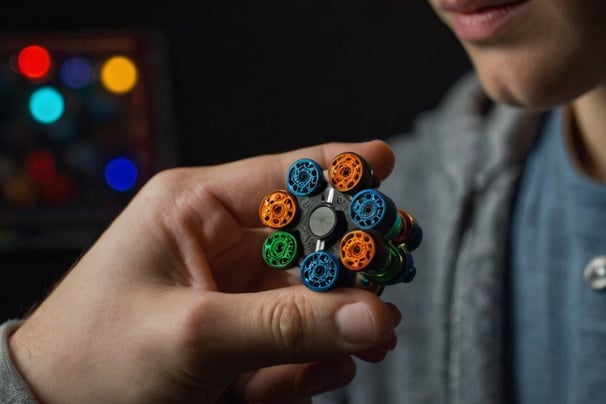

How Fidget Toys Help Reduce Anxiety and Improve Focus
Fidget toys provide a simple yet effective way to help reduce anxiety by offering a physical outlet for nervous energy. When people engage with fidget toys, whether it’s squeezing a stress ball or rolling a fidget spinner, the physical activity provides sensory feedback that can be calming. For individuals with anxiety, this sensation can be soothing, leading to a reduction in emotional stress. It serves as a mindful distraction, allowing the user to redirect their focus away from anxious thoughts and instead engage in a calming and repetitive action.
The science behind this calming effect can be explained by the body's need for proprioception, the awareness of one’s body position and movement.
Fidgeting helps people achieve the right level of sensory stimulation to maintain focus, especially when their environment is too quiet or overstimulating. Fidgeting helps balance this sensory input, allowing people to tune out distractions and focus on tasks at hand. Whether it’s in a classroom, a workplace, or a therapy session, the sensory stimulation provided by fidget toys helps the individual feel grounded and calm.
Fidget Toys as an Anxiety Reduction Tool
Fidget toys serve not only as a tool for focus but also as a form of emotional regulation. For children, adults, and especially those with conditions like ADHD or general anxiety, having a way to self-soothe or self-regulate is crucial.
By incorporating tactile sensory feedback into their routine, individuals can reduce the mental noise that often fuels anxious thoughts.
This is supported by research from Schoenen et al. (2024), which found that fidget devices, like stress balls or fidget cubes, can significantly improve behavior and task engagement in individuals with ADHD, reducing anxiety levels by providing a physical focus for their energy.
In addition, these fidget devices help reduce the need for more disruptive or more noticeable behaviors, such as tapping or constant movement. Engaging with a fidget device can help redirect that restless energy into a manageable activity, promoting relaxation and increasing focus, which is crucial when dealing with stress.

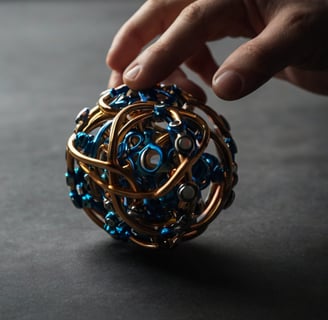
Why Fidget Toys Are Effective in Reducing Anxiety
Fidget toys work because they provide both a mental and physical outlet. These devices help users manage both physical restlessness and mental clutter. When people feel overwhelmed or anxious, their ability to focus can be severely compromised. Fidget toys, such as putty or fidget spinners, can help break this cycle by offering a physical action that helps individuals regain control over their mental state.
The manipulation of a fidget toy can also serve as a grounding technique. For example, the smooth surface of a stress ball or the click of a fidget cube helps create a calming sensory feedback loop. Schoenen et al. (2024) explains that for children with ADHD, even small, non-intrusive movements can improve focus and reduce anxiety, as it allows them to channel excess energy into something productive without disturbing others around them.
This sensory input plays a critical role in calming the mind and helping the user focus on the task at hand. Whether the user is preparing for an important task, sitting through a meeting, or simply trying to relax, fidget toys act as a soothing tool that provides much-needed sensory regulation. The physical act of fidgeting with a toy provides a much-needed outlet for nervous energy, which is especially helpful when a person feels overwhelmed.
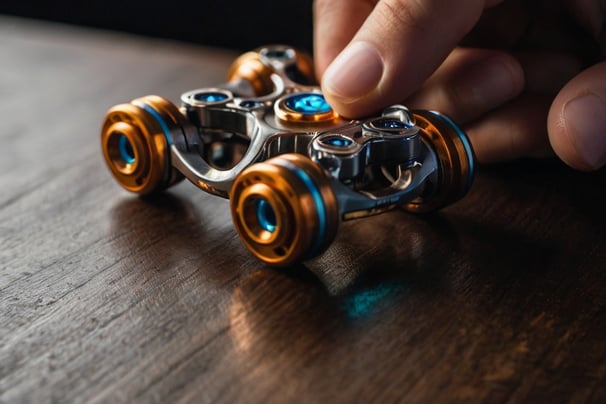

Fidget Toys in Classroom and Therapy Settings
In environments like classrooms and therapy settings, fidget toys can be particularly beneficial. According to Schoenen et al. (2024), fidget devices have been shown to improve academic and behavioral outcomes for children with ADHD and other learning difficulties. In classrooms, children often struggle to stay focused during long lessons or tests, especially when faced with anxiety-inducing tasks. Fidget toys provide an opportunity to redirect their nervous energy, allowing them to stay engaged and participate more actively in learning activities.
In therapy settings, fidget toys have been used to help individuals focus on specific therapeutic tasks or exercises. Edutopia discusses the importance of using fidget toys in a controlled, purposeful manner. When integrated properly into structured environments, fidget tools can help children with ADHD remain calm and reduce disruptive behaviors. Teachers and therapists can use fidget toys as part of a larger therapeutic strategy to support attention, reduce anxiety, and improve self-regulation skills.
However, not all fidget toys are appropriate for every setting. The Conversation points out that while items like stress balls or putty are generally well-received in therapeutic contexts, tools like fidget spinners can be a source of distraction. Spinners, for instance, require hand-eye coordination, which can pull attention away from the task at hand. This visual distraction can undermine the calming benefits that these toys are meant to provide.
Therefore, it is important to choose the right fidget tools based on the context and the individual’s needs. Simple, tactile fidget devices like stress balls or fidget cubes are more likely to be effective in maintaining focus and calming anxiety in classroom settings.
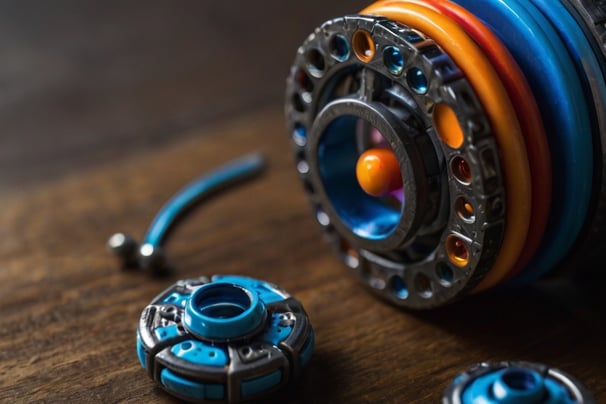

The Importance of Context and Mindful Use of Fidget Toys
The effectiveness of fidget toys is closely linked to their mindful use. Fidget tools can be most effective when they are incorporated thoughtfully into a student's environment. Fidget toys should be introduced as tools to enhance focus and productivity, not as a means of distraction. Teachers need proper training and guidance on how to implement these tools effectively, ensuring that students use them appropriately and gain maximum benefit.
By offering students the option to use fidget devices when needed, educators can provide them with the support necessary to improve focus and reduce anxiety. However, overuse or improper use can lead to distractions, so it’s essential to balance their use with clear structure and purpose. This requires a differentiated approach—fidget toys should be tailored to each student's specific needs to ensure they are providing the intended benefits.
Further Research and the Future of Fidget Toys
Despite the growing body of evidence supporting the benefits of fidget toys, Schoenen et al. (2024) emphasize that more research is needed to fully understand the long-term effects of these tools.
Current studies suggest that fidget toys can improve focus and reduce anxiety, but more studies are required to determine the best ways to incorporate them into everyday practices. This could include further investigation into the different types of fidget devices and how they work in various settings, such as classrooms, therapy, and workplaces.
As technology advances, the future of fidget toys looks promising. Researchers and designers are working on next-generation fidget tools that incorporate smart technology, enabling these devices to offer more tailored experiences.
For instance, new fidget tools could offer biofeedback or track the user’s stress levels to provide real-time support. These innovations could offer even greater benefits for individuals struggling with anxiety and attention issues.
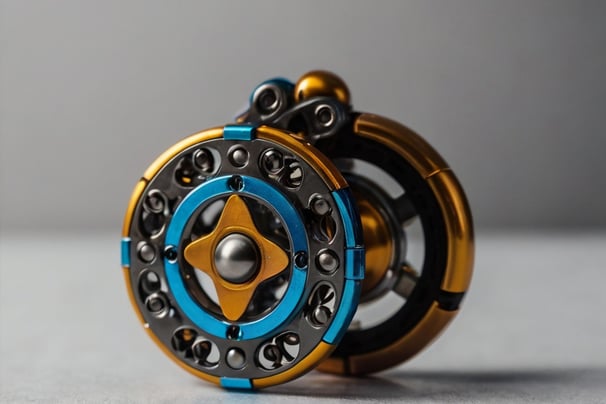

Conclusion: The Science Behind Fidget Toys: Why They Help Reduce Anxiety
Fidget toys are much more than a passing trend; they are grounded in scientific principles that help reduce anxiety and improve focus. By providing sensory feedback and offering an outlet for nervous energy, these tools enable individuals to regulate their emotional states and stay focused, particularly in stressful or distracting environments.
While research on fidget toys continues to evolve, the current body of evidence shows that they are an effective tool for managing anxiety and improving productivity. Whether in the classroom, therapy settings, or everyday life, fidget toys provide a valuable, simple solution to help individuals regain focus, manage stress, and achieve a greater sense of calm.
As we continue to explore the science behind fidget toys, it’s clear that these tools are here to stay, offering practical support for those who need it most.
References:
Graham, M. (2017, July 6). Fidget toys aren’t just hype. The Conversation. Retrieved from https://theconversation.com/fidget-toys-arent-just-hype-77456
· Academic Study:
Schoenen, E. C., Alsip, B. S., Martinez, J. C., Grekov, P., Aspiranti, K. B., & Hulac, D. M. (2024). A meta-analysis of fidget devices as academic and behavioral interventions. School Psychology Review, 1–13. https://doi.org/10.1080/2372966X.2024.2411576
· SensoryEdge Blog:
SensoryEdge. (n.d.). The science behind fidget toys. Retrieved from https://blog.sensoryedge.com/the-science-behind-fidget-toys/
· Edutopia Article:
Edutopia. (n.d.). Do fidgets help students focus? Retrieved from https://www.edutopia.org/article/do-fidgets-help-students-focus/
